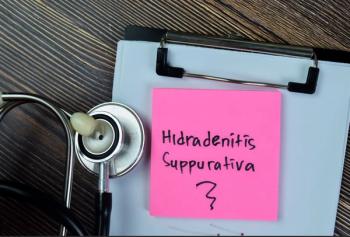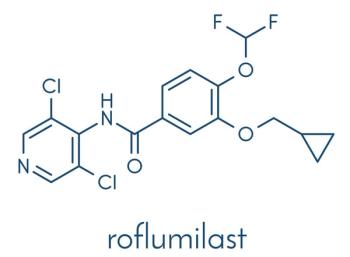
Tattoo-Ink Contact Dermatitis
A 56-year-old man presented with pruritic, raised plaques with crusting and occasional weeping in tattoos he had acquired a few months earlier. The lesions were confined to the red and blue pigmented areas only, which suggested a contact dermatitis to the metal in the tattoo ink.
A 56-year-old man presented with pruritic, raised plaques with crusting and occasional weeping in tattoos he had acquired a few months earlier. The lesions were confined to the red (A) and blue (B) pigmented areas only, which suggested a contact dermatitis to the metal in the tattoo ink.
Allergic reactions to tattoo ink can be mild, as in this patient, or severe (eg, systemic eczematous dermatitis). The reaction can last for many months until the body breaks down the pigment with the offending allergens or develops a tolerance to these allergens. Many metal salts can trigger cutaneous reactions. Metals in tattoo ink that commonly cause such reactions include:
- Mercury sulfide (cinnabar and vermilion) in red ink.
- Chromium and chromic oxide in green ink.
- Cobalt albuminate in blue ink.
- Cadmium in yellow ink.
These allergic reactions may not develop until days, weeks, or even years after a tattoo is placed. A vaccine that contains thimerosal can also trigger an acute allergic reaction in the portions of tattoos with red cinnabar.
Assure patients with allergic reactions to tattoo ink that their symptoms will eventually resolve. Topical or oral corticosteroids and triamcinolone intralesional injections may help alleviate symptoms. In rare instances, such as when the affected portion of the tattoo is small, excision may be considered.
This patient was given triamcinolone ointment, to apply twice a day for 3 weeks, and oral hydroxyzine. After the eruption subsided, this treatment was switched to pimecrolimus cream only.
References:
FOR MORE INFORMATION:
Metal salts in tattoos. In: Rietschel RL, Fowler JF Jr, eds.
Fisher’s Contact Dermatitis.
5th ed. Philadelphia: Lippincott Williams & Wilkins; 2001:607-609.
Newsletter
Enhance your clinical practice with the Patient Care newsletter, offering the latest evidence-based guidelines, diagnostic insights, and treatment strategies for primary care physicians.



















































































































































































































































































